Blue Boar VR
Blue Boar VR: Virtual Reality interactive game created in the Unreal game engine.
Project Summary:
At a moment when the phrase 'Witch Hunt' is repeatedly misused, Blue Boar VR invites viewers to ‘play’ in the complex absurdity of accusations that were used against the artist’s 10th great-grandmother in the infamous Salem Witch Trials. Lines are drawn in the piece between contemporary uses of the phrase "Witch Hunt", the #metoo movement and women's power. The scene uses an embroidered digital motif employing voxels and textures to conjure imagery related to 17th century hand-sewn designs. Blue Boar VR allows us to re-play the past, where we can begin to imagine possible futures.
Project Description:
Blue Boar VR considers multiple perspectives in a scenario in which wild accusations and mass hysteria are escalating out of hand. Drawing from actual testimony of the tried and convicted Mary Bradbury, Blue Boar VR raises questions about truth, fiction and justice by inserting viewers directly into the blue boar story.
You may choose to play the game as Mary, picking carrots and fruits in your garden before an errant beast crashes through your fence and runs off into the wood. You may also ride on horseback as George Carr, imagining you see a blue boar dash at your horse’s legs. Or play as the Boar himself as you crash through Salisbury village, re-foresting the town.
Testimony from Mary’s trial: Richard: Carr: "I saw mis Bradbery goe into her gate, turn the corner and immediately there derted out of her gate a blue boar.” Zorobabell Endicott testifieth and saith that […] “I also saw the blue bore dart from mr carrs horses legs in at mis Bradbery’s window.” [1]
Why a blue boar? Both the accused and her accusers are part of a colonial society that violently occupies indigenous lands. As stated by Roxanne Dunbar-Ortiz[2], “Salem authorities would justify witch trials by claiming that the English settlers were inhabiting lands controlled by the devil.” Perhaps indigenous folktales were reflected in the colonists’ imaginings and fears. The blue boar could be a stand-in for the pukwudgie, a mischievous imp found in Wampanoag folklore. Or perhaps the colonists were taking a sacred animal and imbuing it with evil connotations. Dr. Juan G. Sánchez Martinez, poet and indigenous scholar, states that many places and things that were associated with spiritual and sacred practices of indigenous people were reflected as evil by European colonizers[3]. Or perhaps Christian symbolism of the boar as a brutal, sexually charged representation of the mother Goddess[4] was still present in the psyche of George Carr and his sons.
Historic witch accusations can be re-visited at our particular 21st century moment in which we see powerful men claiming they are victims of a ‘witch hunt’ (primary examples being the #metoo movement and Kavanaugh confirmation hearings) while women continue to be penalized for speaking out. The term “witch hunt” is used today as it was in the 17th century. “..many historians agree that the witch hunts of the early modern period were a tool for reinforcing male-dominated systems of authority.” [5]
The aesthetic of Blue Boar VR centers upon an embroidered digital motif, using texture to conjure imagery related to early American needlepoint. Characters are designed as voxels, which harken the style of Minecraft, but relate closely to the ‘pixelated’ style used in embroidered patterns. The use of embroidery also references and raises to a high art the domestic handiwork of women.
Blue Boar VR also re-presents historic witch trial accusations at a moment when increasing public engagement with VR begs us to consider ways in which female bodies occupy virtual space.
It is by re-playing the past that we can begin to imagine possible futures.
Bibliography:
[1] “Salem Witch Trials Documentary Archive.” n.d. Accessed January 24, 2019. http://salem.lib.virginia.edu/home.html.
[2] Dunbar-Ortiz, Roxanne. 2015. An Indigenous Peoples’ History of the United States. Beacon Press: 36.
[3] Dr. Juan G. Sánchez Martinez, 2016. In conversation with the artist.
[4] Caspari, Elizabeth. 2003. Animal Life in Nature, Myth and Dreams. Wilmette, Ill: Chiron Publications.
[5] Cassese, Erin. 2018. “A Political History of the Term ‘Witch Hunt.’” Vox. October 31, 2018.
Installation:
This artwork is viewable in Virtual Reality in a room or curtained-off space approximately 9’ x 9’ square (6'x6' minimum), with the HTC Vive headset and controllers.
Playthrough Game Capture:
Stills:
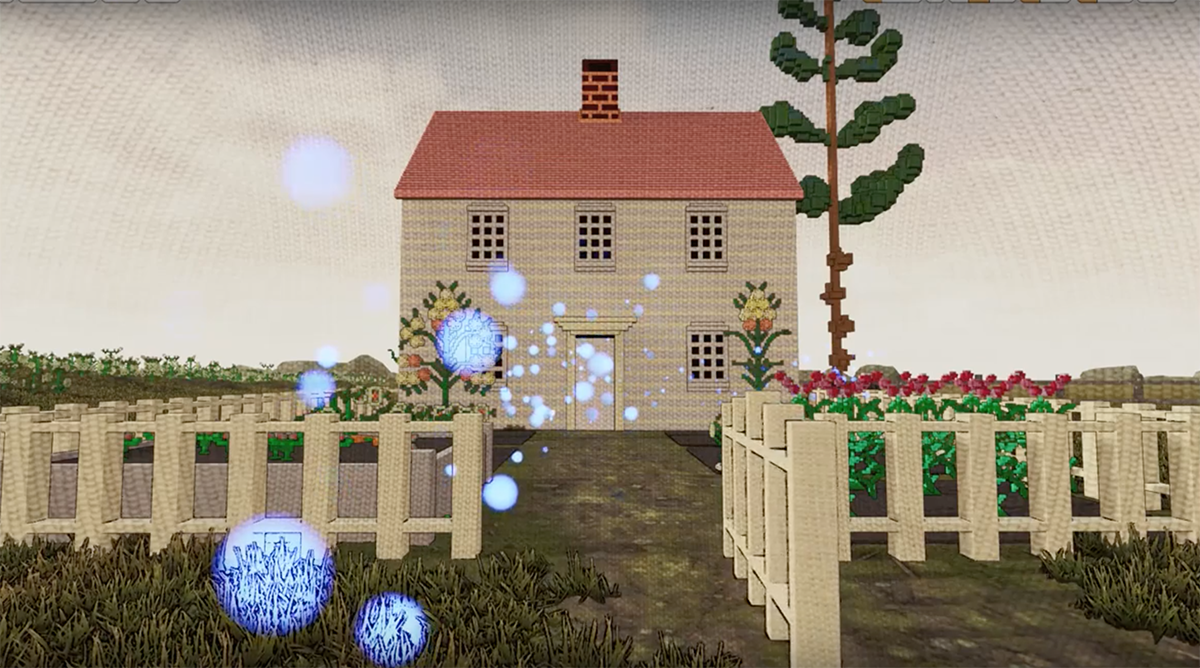
Mary's house.

Boar crashing through fence with embroidery texture.
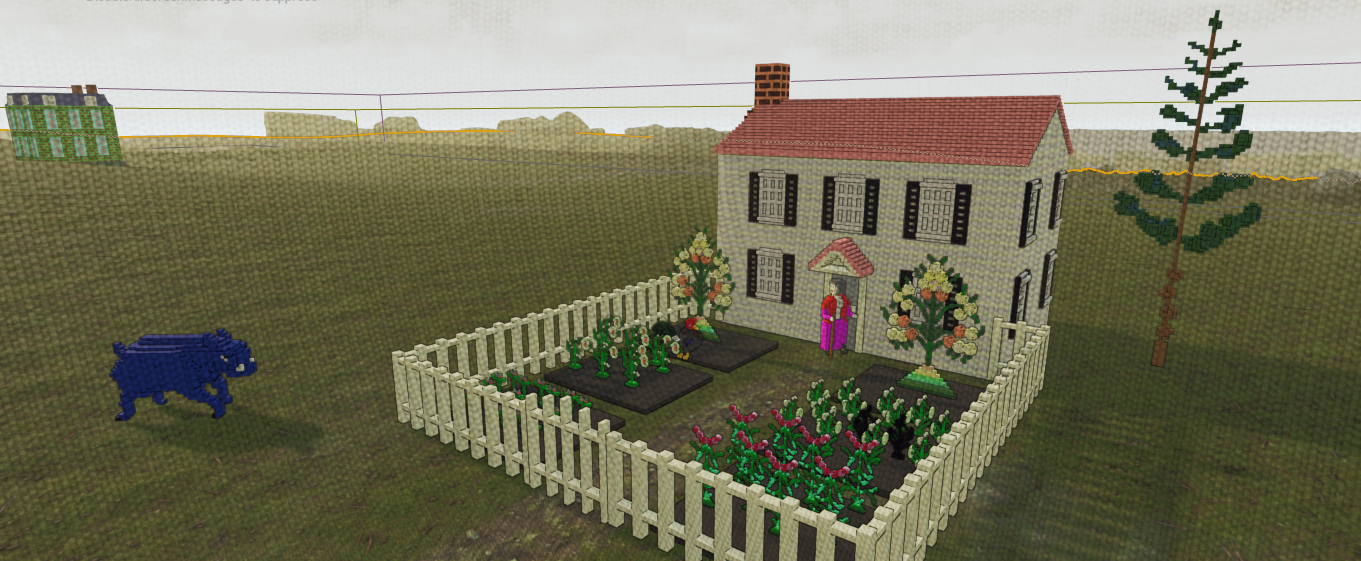
Salisbury scene: Mary and boar (in production).
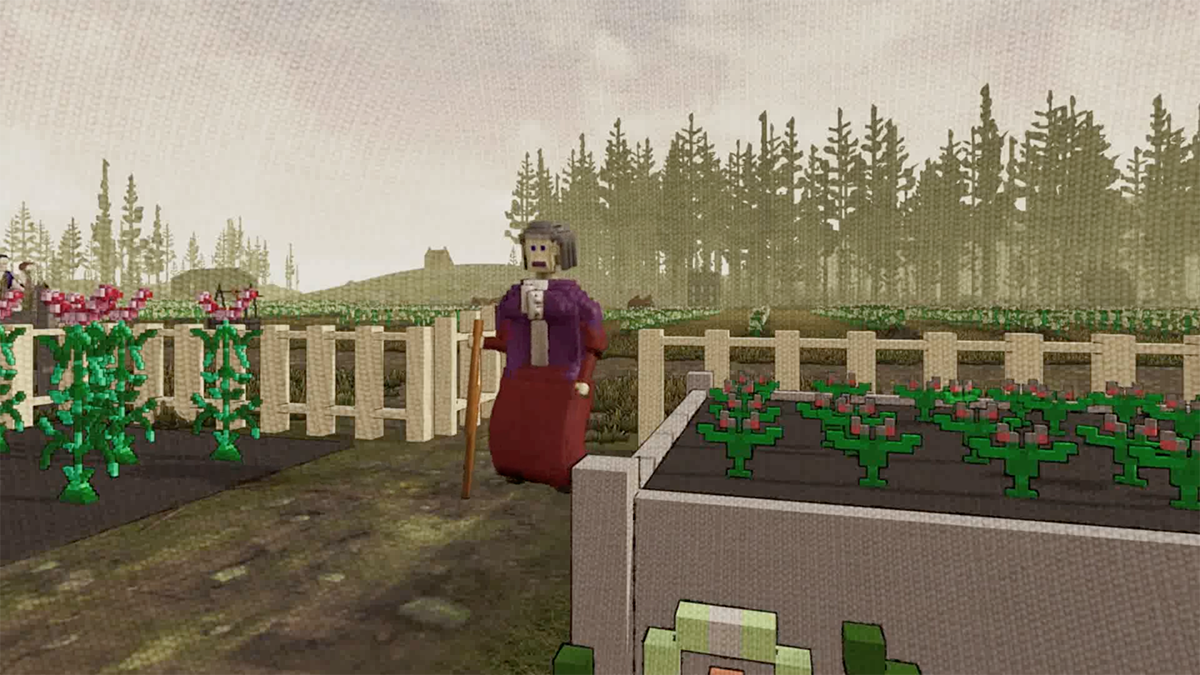
Mary enters her garden.
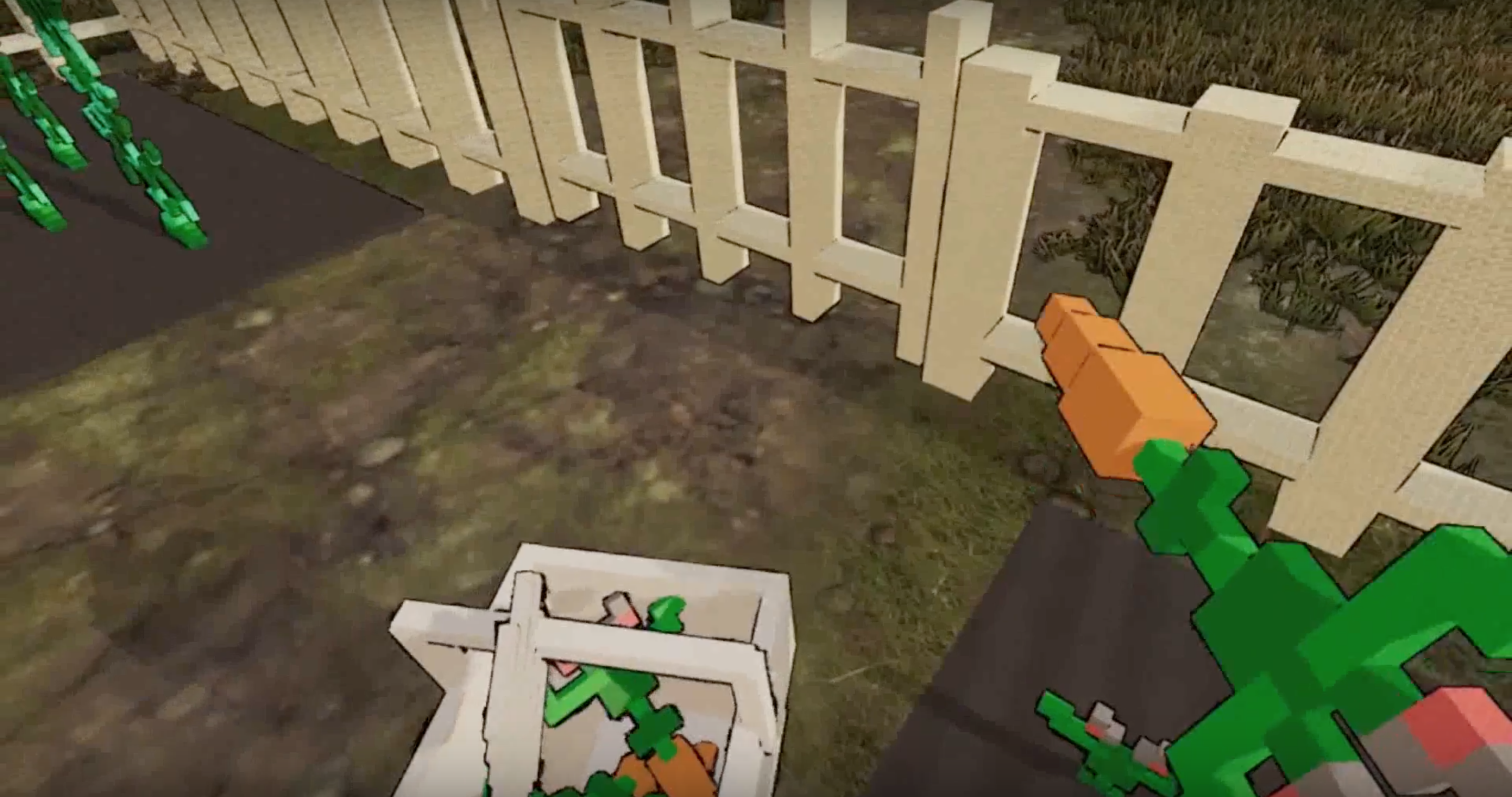
Player as Mary picking carrots.
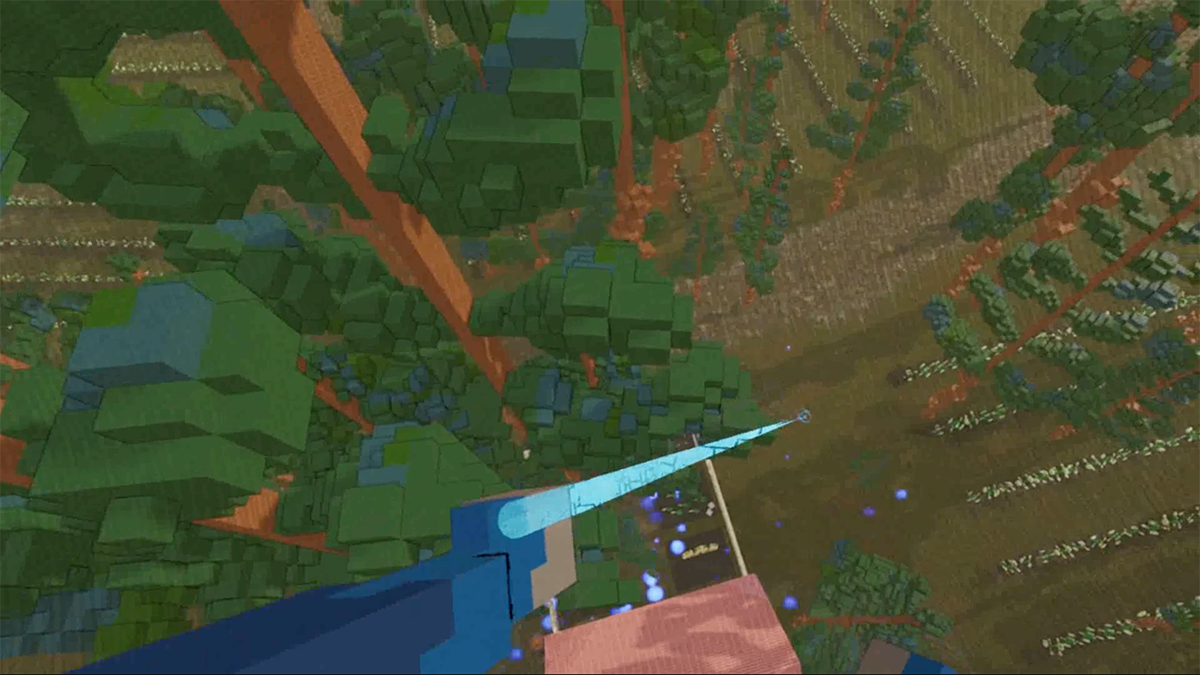
Player making trees from above in Boar Scene.
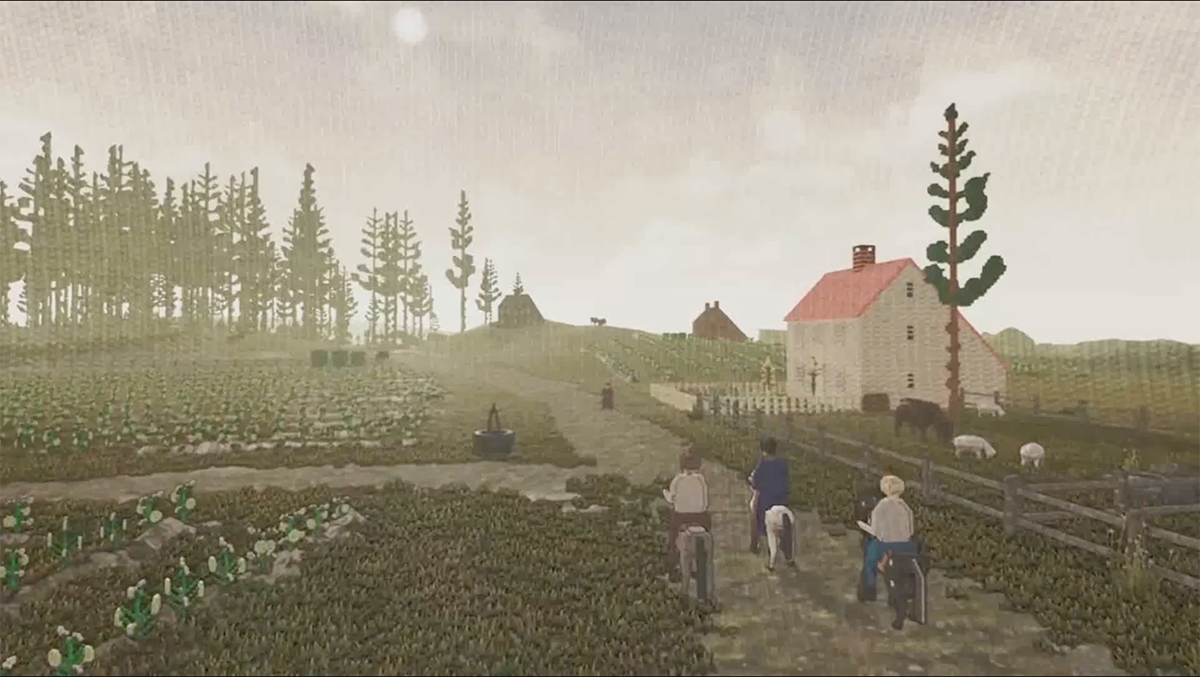
Salisbury scene: The Carrs on the ferry road.
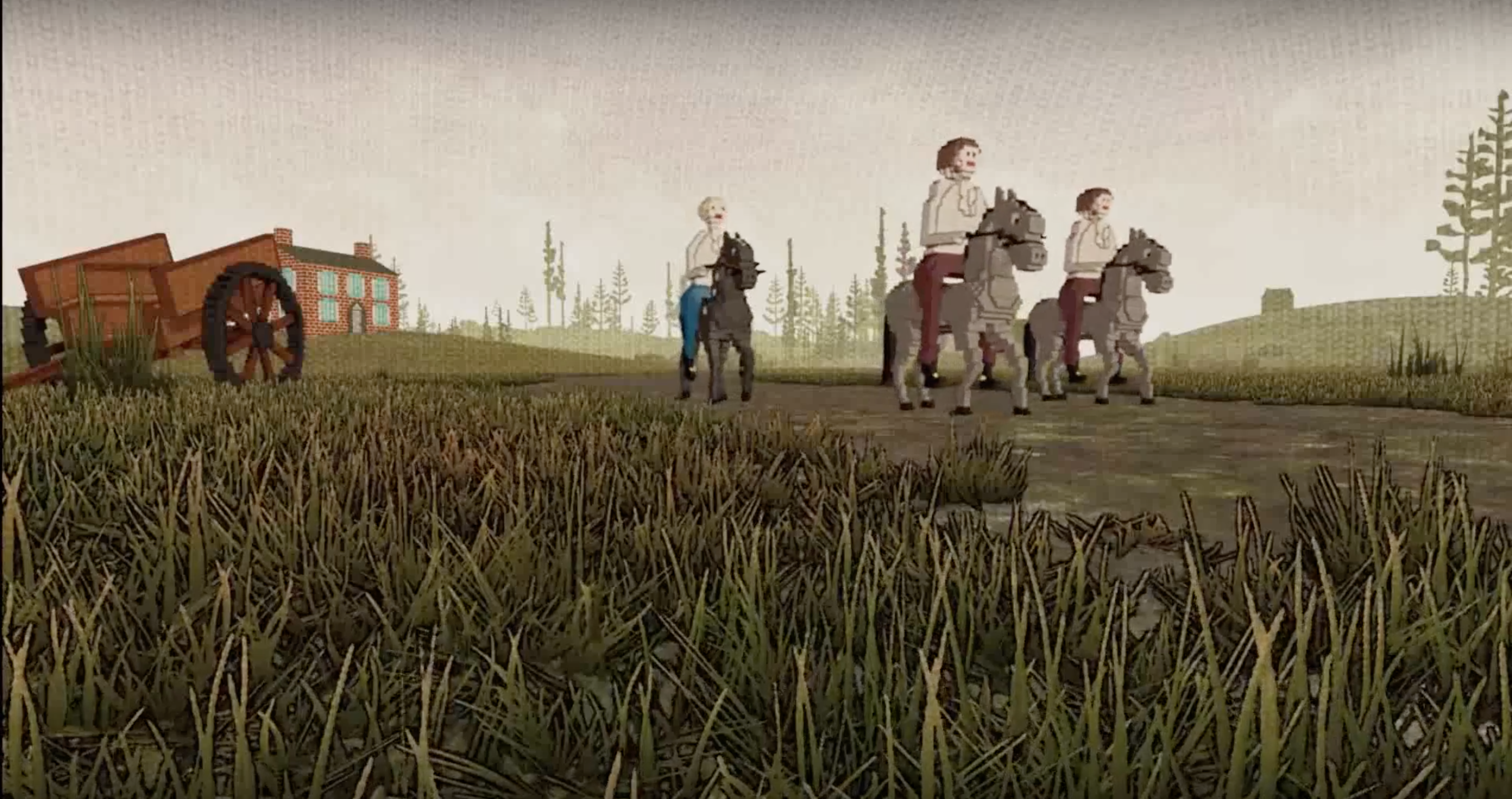
Salisbury scene: The Carrs.
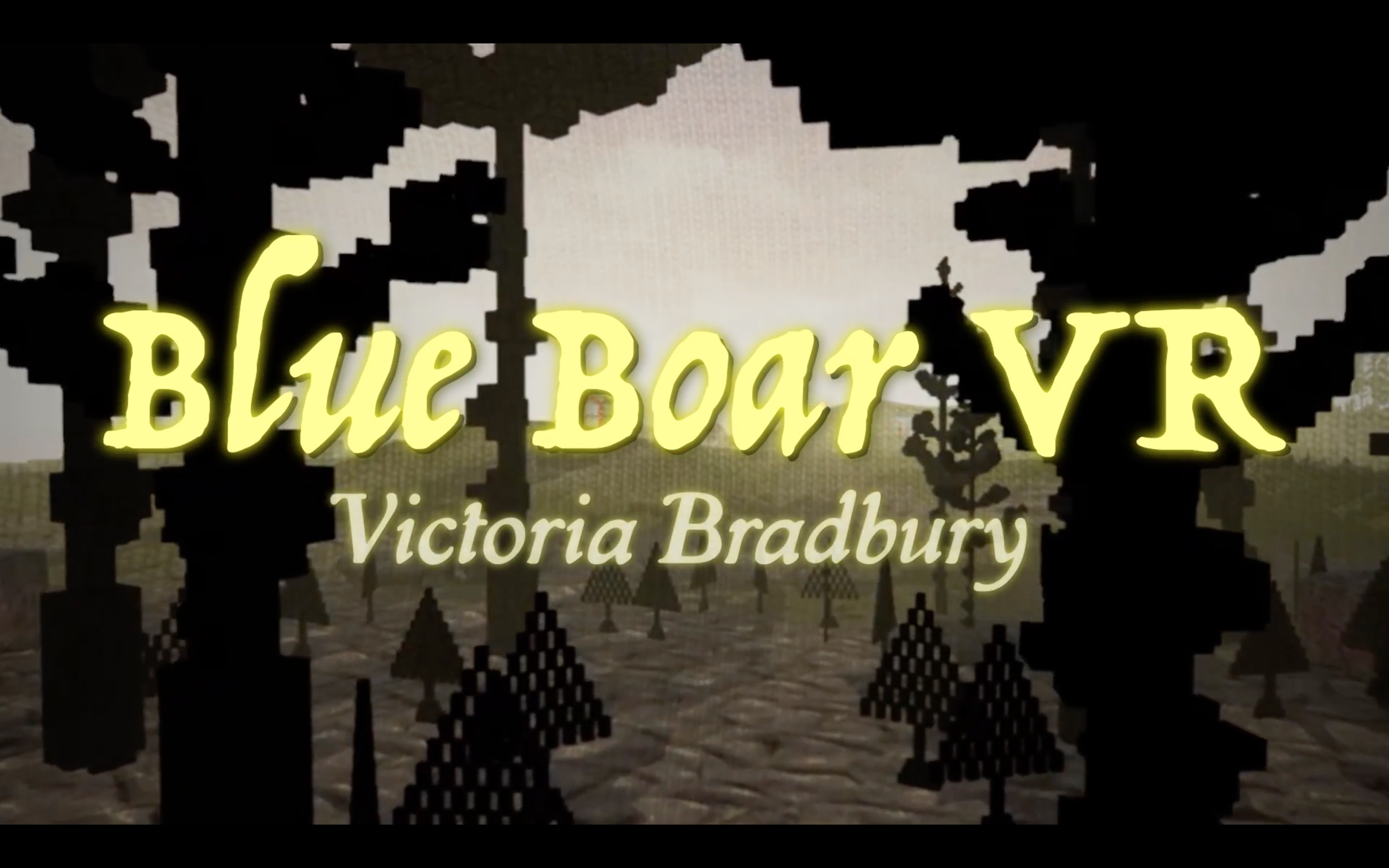
Blue Boar VR is by Victoria Bradbury
//////Additional Credits:
//Unreal Engine Development:
Kendall Breivogel
//3D Modeling and Animation:
Forest Gamble
//Sound Design and Composition:
David Freund
//Additional Unreal Scene Development:
Wesley Stroupe
Mitchell Connor
//Voices:
Scott Walters
//Video Credits:
Vr Headset Videography: Luke Nelson
Vr Headset Actors: Victoria Bradbury, Lei Han, Chelsea Childers
Video Editing: Forest Gamble
Video Sound Mastering: David Freund
Blue Boar VR is made possible by funds from UNC Asheville's Division of Natural Sciences and the Department of New Media. The CSCI Department was generous in their sharing of equipment and space to make this project possible.